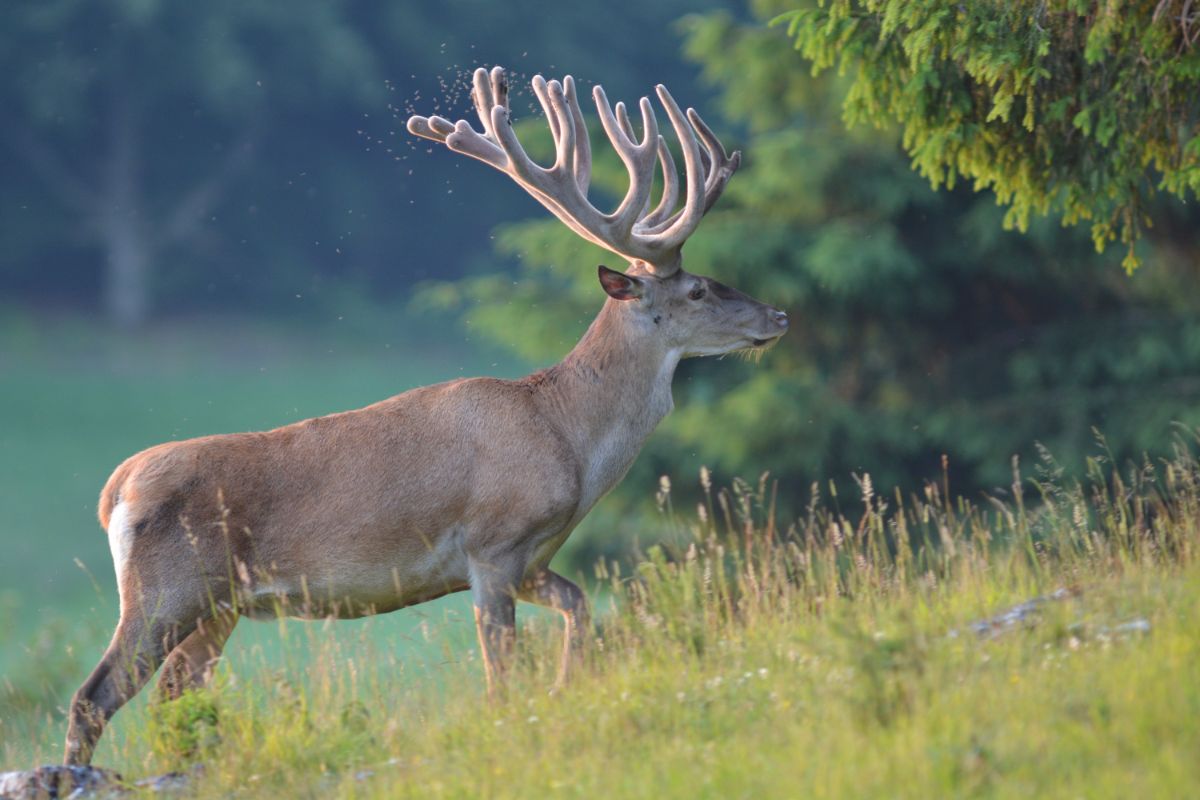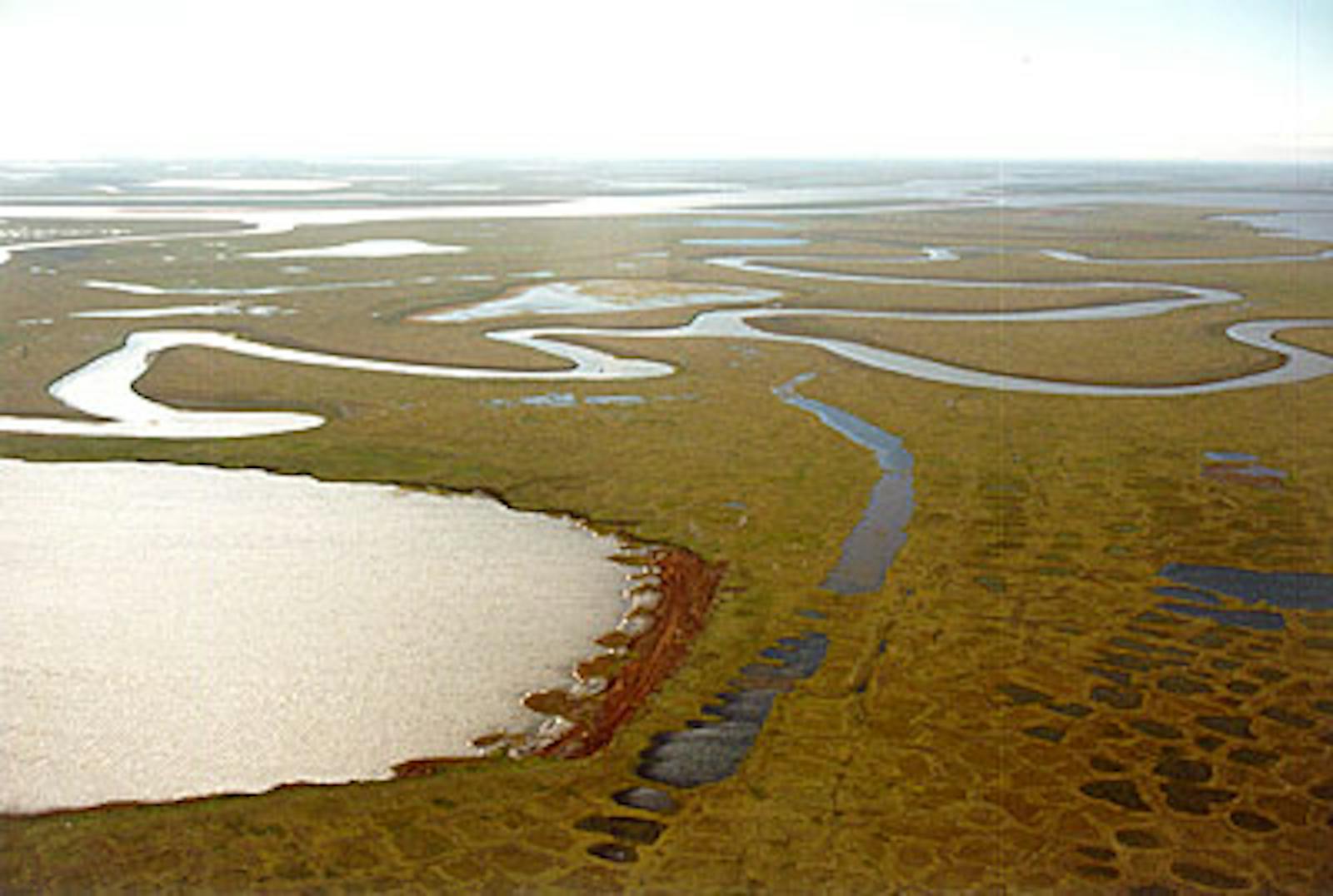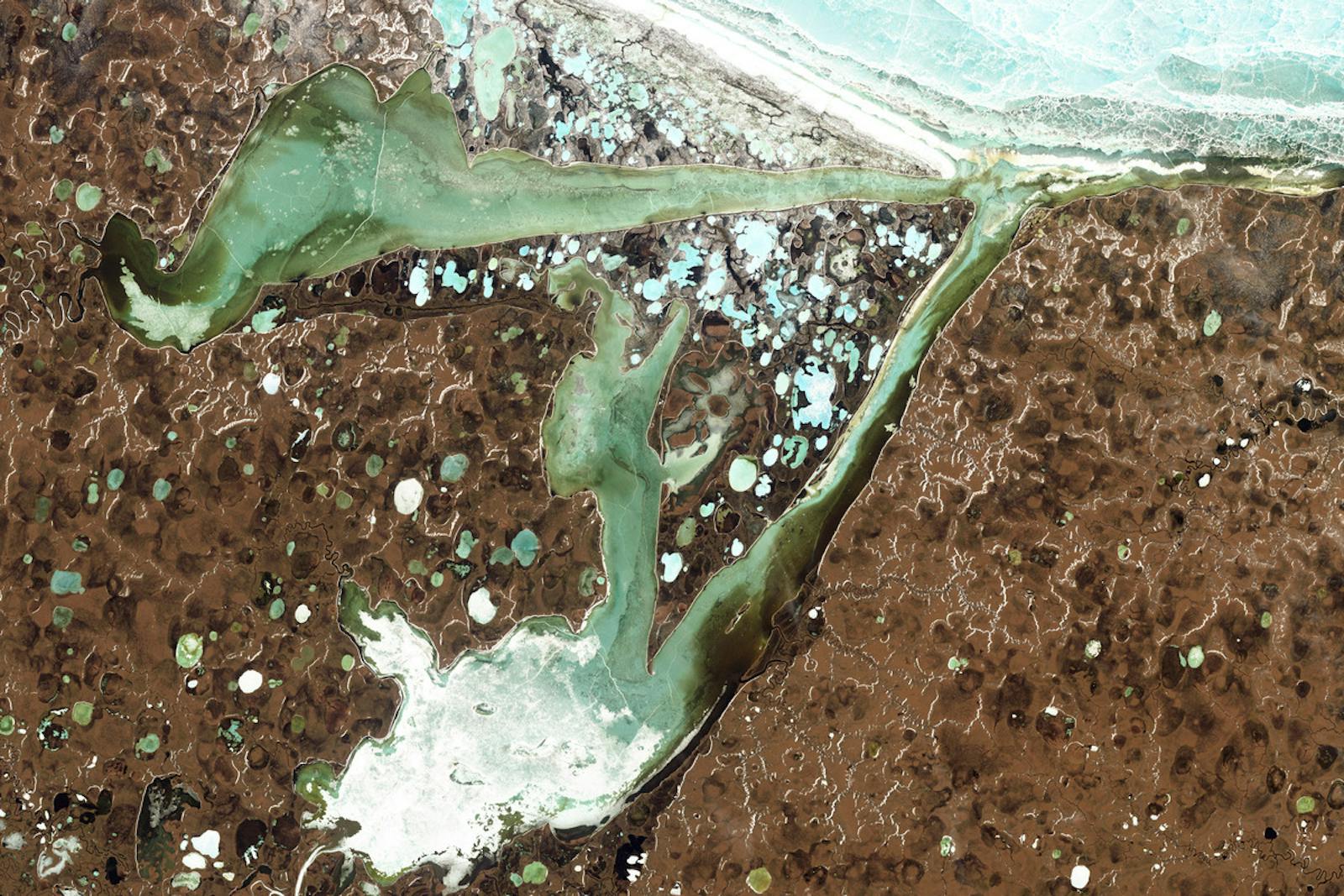Northeast Siberian Coastal Tundra
The ecoregion’s land area is provided in units of 1,000 hectares. The conservation target is the Global Safety Net (GSN1) area for the given ecoregion. The protection level indicates the percentage of the GSN goal that is currently protected on a scale of 0-10. N/A means data is not available at this time.
Bioregion: Greater Eurasian Tundra (PA4)
Realm: Subarctic Eurasia
Ecoregion Size (1000 ha):
22,310
Ecoregion ID:
775
Conservation Target:
88%
Protection Level:
3
States: Russia
Permafrost conditions in the Northeast Siberian Coastal Tundra have formed uncountable lakes, bogs, and hummocks, which are home to low-growing plants, mosses, and lichens adapted to cope with the endless cold. This remote, pristine environment is a haven for wild reindeer. Arctic foxes and snowy owls feed on lemmings, sleek Stellar’s eider and the critically endangered Siberian cranes nest amongst the tundra bogs, and polar bears spend the short summer waiting hungrily for sea ice to return.

The flagship species of the Northeast Siberian Coastal Tundra ecoregion is the reindeer. Image credit: Creative Commons
This ecoregion covers northeastern Sakha, from Sytygan-Tala Bay to the Kolyma river delta. This stretch of Arctic Ocean coastline edges the coldest seas in the northern hemisphere, covered with ice for at least 9 months of the year. Average monthly temperatures are -34–9°C and mean annual precipitation ranges between 150–225 mm. Rivers draining into the Arctic Ocean and continuous permafrost conditions shape the landscape. A shallow layer of soil melts in the summer but deeper soil is frozen all the time. In some areas, underground ice pushes soil up in bumps, in other places the soil may melt more in summer, forming shallow depressions. A complicated microrelief of hummocks, polygonal ridges, and bog depressions has formed and there are thousands of lakes.
Along the coastline, plants such as creeping alkaligrass, Sabine's semaphoregrass, saltmarsh starwort, and marsh fleawort turn bright red in the autumn, contrasting vividly with the blue of the Arctic Ocean. Further inland, Arctic tundra hummocks and polygonal ridges have polar willow, Bigelow's sedge, Arctic grass, northern wood rush, vermicular whiteworm lichen, curled snow lichen, common freckle pelt lichen, and mosses (Polytrichum and Sphagnum species). Bogs are covered with Arctic marsh grass, creeping sedge, and dense cottongrass. Flowers of sticky mountain avens, Arctic cinquefoil, and Arctic groundsel bloom during the brief summer.
Further south, Arctic gray willow thickets grow on floodplains and species such as hare-tail cotton-grass, stairstep moss, tealeaf willow, and Alpine bearberry grow. Dwarf birch and Dahurian larch trees appear in the southeastern borders of the ecoregion. Relicts of Pleistocene tundra-steppe vegetation include weak arctic sedge and Arabidopsis bursifolia. The starflower Stellaria kolymensis is endemic.
The ecoregion is home to the largest wild population of tundra reindeer, feeding on different grasses, herbs, sedges and lichens depending on seasonal nutritional content. Polar bears hunt ringed seals when ice is present, inhabiting the tundra in summer. They live off their fat stores, feeding on nesting birds, fish and berries when they can. Three lemming species are common, and superabundant in some years. These provide food for Arctic fox, rough-legged buzzards, and snowy owls. This is the core breeding range for Stellar’s, spectacled, and king eiders, along with lesser white-fronted geese, northern pintail, and long-tailed ducks. The critically endangered Siberian cranes nest in polygonal bog and tundra near coastal meadows. During autumn, huge numbers of least cisco and Arctic cisco swim upstream along the Kolyma delta channels to their spawning grounds.
Much of the ecoregion is relatively undisturbed, and large areas of pristine habitat survive. In summer, cargo ships from the Arctic Sea sail up the Yana, Indigirka, and Kolyma Rivers. In the 1970s and 1980s, pollution by mining operations reduced species diversity and the abundance of aquatic wildlife in the Khroma river, which to this day may still have residue impact. A series of Important Bird Areas stretches from the Yana Delta in the west to the Kolyma Delta in the east. Chajgurgino Zakaznik was established in 1982 and the Kytalyk Resource Reserve in 1996.
Oil extraction development could lead to pollution of the tundra wetlands. Where domesticated reindeer herds are driven, localized overgrazing can occur and destruction of Siberian crane nests is a problem. Climate change and increasing temperature are predicted to cause boreal forests to spread northwards, reducing the area of arctic tundra.
The priority conservation actions for the next decade will be to: 1) establish and expand protected areas into mountain and lowland tundra, and areas with endemic and relict species; 2) control and prevent poaching; and 3) prevent and minimize pollution and habitat loss due to mining and fossil fuel extraction.
Citations
- Isaev, A.P., Protopopov, A.V., Protopopova, V.V., Egorova, A.A. Timofeyev, P.A., Nikolaev, A.N., Shurduk, I.F., Lytkina, L.P., Ermakov, N.B., Nikitina, N.V., Efimova, A.P., Zakharova, V.I., Cherosov, M.M., Nikolin, E.G., Sosina, N.K., Troeva, E.I., Gogoleva, P.A., Kuznetsova, L.V., Pestryakov, B.N., Mironova,S.I., and Sleptsova, N.P. 2010. Vegetation of Yakutia: Elements of Ecology and Plant Sociology. In: Troeva, E.I., Isaev, A.P., Cherosov, M.M. and Karpov, N.S. eds. The Far North: Plant Biodiversity and Ecology of Yakutia. Dordrecht: Springer. pp. 143-260
- Newell, J. 2004. The Russian Far East: a reference guide for conservation and development. 2nd ed. McKinleyville: Daniel & Daniel, Pub, Inc. pp. 283-312.
- Andreev, A.V. 2004. Wetlands in Russia, Volume 4: Wetlands in Northeastern Russia. Moscow: Wetlands International–Russia Programme.




.png?auto=compress%2Cformat&w=300)

